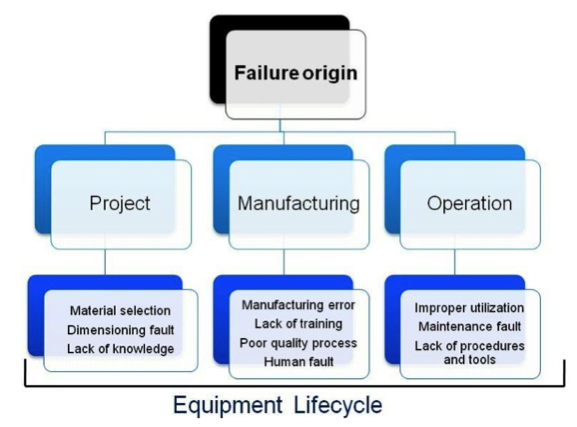Introduction
Service failures and safety incidents of machines, structures, and pressure equipment have been experienced in the oil and gas industry for many years without warning, with varying degrees of consequential damages to health, safety, environmental, business, and reputation. Unfortunately, equipment failures will occur no matter how effective a plant’s reliability program is. Not all failures are catastrophic. Many failures involve a gradual degradation of properties or excessive deformation or wear until the component is no longer functional, long before its design life is reached. Failures due to wear or general corrosive attack are not usually spectacular failures, but account for tremendous material losses and downtime every year. All failures deserve the attention of the investigator because they reduce production efficiency, waste valuable materials, and increase costs. In some instances, they cause considerable damage or personal injury. For this reason, a good failure analysis program should be implemented at sites to understand the root cause of problems, avoid the recurrence of issues, and reduce the cost of unreliability. With an understanding of failures and their causes, technical remedies can be incorporated at various stages, and thus, the recurrence of failures can usually be prevented. Failure Analysis and Incident Investigation should be part of all Asset Integrity Management (AIM) programs. They involve the process of studying and analyzing the failure of equipment in order to better avoid the recurrence of issues that led to the failure in the first place. The success of failure analysis depends on the use of proper analytical techniques in proper sequence. This article discusses the process of performing failure analysis and the benefits that can be realized from a well-implemented failure analysis procedure.
What is Failure Analysis?
There are several definitions for failure analysis, but it is typically defined as “the process of interpreting the features of a deteriorated system or component to determine why it no longer performs the intended function.” The failure analysis process involves first using deductive logic to find the mechanical and human root causes of the problem, and then using inductive logic to find the latent (most commonly organizational) causes. Finally, an engineering solution should be determined and lead to the changes needed to prevent the recurrence of the failure, or at least mitigate the damage caused by future incidents.
It is essential to understand that failures can be induced throughout the entire life cycle of equipment (see Figure 1). It is assumed that all failures, without exception, belong to one or more of the following “Seven Causes”:
- Faulty design
- Material defect
- Manufacturing and processing deficiencies
- Assembling or installation defects
- Off-design or unintended service conditions
- Maintenance deficiencies (neglect, procedures)
- Improper operation

Failure analysis is a process that should be present in every high quality reliability maintenance program. Some of the benefits that can be obtained from this process include recurring problem prevention, hidden failure mechanism identification, and learning valuable lessons from past incidents and accidents. It would be nice if there were only one cause per failure, because correcting the problem would then be easy. Unfortunately, in reality, there are often multiple causes to every equipment failure. Root causes can be categorized into physical causes, human causes, and latent causes. Most of the time, the failure analysis process stops at the identification of the physical causes. If the engineering team just uncovers the physical causes of the failure, a complete picture of why the incident occurred has not been painted. Going into greater depths to find the human causes allows one to modify certain behaviors, and delving into and addressing latent causes, such as organizational shortcomings, can result in the elimination of entire classes of failures.
The types of root causes can be defined in the following way:

















Comments and Discussion
There are no comments yet.
Add a Comment
Please log in or register to participate in comments and discussions.